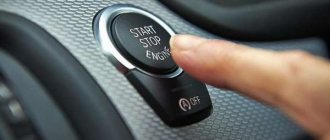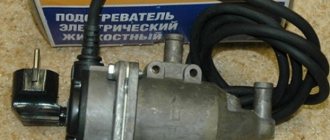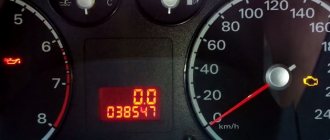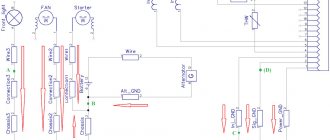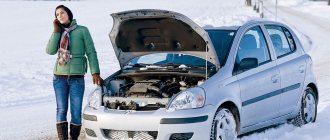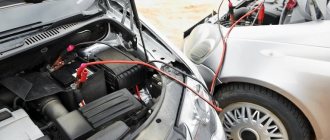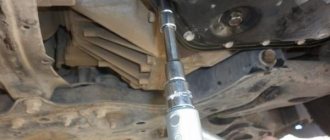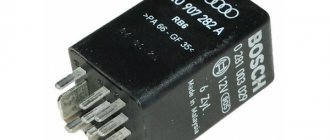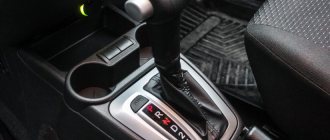Gross mistakes made during the operation of a car always have consequences that appear either immediately or over time. This applies even to the most common action for every driver - starting the engine. How to start a car with an automatic and manual transmission, are there separate instructions for starting it in the winter, is it possible to start it if the battery is dead?
Even starting the engine, which falls into the category of simple operations, can provoke a real panic attack in a beginner. Engineers have tried to make this process as simple as possible, both in the case of manual and automatic transmissions. What does the step-by-step procedure look like in both cases, and how to start the car in winter?
Car with manual transmission
Before attempting to start the car, check and adjust all mirrors and make sure that everything you need while driving is within easy reach. Do not neglect the safety rules, so buckle up and follow the step-by-step instructions, thanks to which you will know exactly how to start a car with a manual transmission:
- Check the position of the parking brake - it should be up.
- Check the position of the gear shift lever - it should be in neutral and move freely left and right.
- Depress the clutch pedal to make starting the engine easier. In some cars, without this step, you will not be able to start the engine with the key.
- Insert the key into the ignition and turn it clockwise to activate the ignition system. At this stage, the machine is being prepared for start-up, which will be indicated by the lights on the instrument panel turning on. If the engine is fuel-injected, wait 5 seconds while the fuel pump pumps fuel to start the engine. If the car has a carburetor, pull the choke towards you.
- Turn the key clockwise and hold it in this position to engage the starter. Wait 1 - 5 seconds and the motor will start if everything is in order in the system. Repeat this step after a minute if nothing works, but do not turn the starter for more than 5 seconds, otherwise the spark plugs will flood with fuel and the battery will be discharged.
- After starting the engine, wait until it warms up. This stage cannot be neglected in the cold season, since a warmed-up engine gains speed better, develops power and demonstrates stable operation.
Starting a car with an automatic transmission
An automatic transmission requires protection against incorrect starting, so such protection was immediately invented in tandem with the gearbox. If you don’t know how to properly start a car with an automatic transmission and this is your first time behind the wheel, you will struggle with the ignition. Traditionally, starting an engine with an automatic transmission occurs as follows:
- The speed selector must be set to parking mode (P).
- Squeeze the brake pedal, do not release it, and start starting the engine.
- Insert the key into the lock and turn it until you hear a click. At this stage, the fuel pump starts and the indicators on the dashboard light up.
- Turn the ignition key when the lights go out until the starter starts. Release the key and it will return to its original position.
- If the engine refuses to start, you can make a couple more attempts at intervals of half a minute.
- Move the selector to position D or R, taking into account the desired direction of travel, after the gearbox has warmed up. Start driving after releasing the brake pedal.
This is interesting: Operation of the Chevrolet Cruze automatic transmission according to owner reviews
Warming up the engine after starting is a mandatory step, since it ensures normal operation of the engine lubrication system. This is explained by the fact that the oil mist necessary to lubricate the cylinders and pistons does not form immediately.
Warm up the car while idling. In this case, the number of engine revolutions should be slightly higher than idle speed.
Do I need to warm up my car before driving?
In winter, especially in Russian conditions, the automatic transmission must be warmed up before driving: the oil temperature in all components must rise to operating temperature. To do this, with the engine running and the brake pedal pressed, move the mode selection lever sequentially to all positions, holding each position for 5 - 10 seconds. Then turn on the desired mode and hold the car with the brake pedal for several minutes, while the speed should be idle. Now you can start moving, but try to avoid sudden acceleration for the first few hundred meters.
How to start a car in winter?
Gas engine
Problems with starting the engine begin when the temperature drops below 15 degrees Celsius. Actions for such a situation must be learned step by step:
- Turn off the heated windows, seats, heater fan, radio and other devices that are powered by the battery.
- Warm up the battery by turning on the high beam for half a minute and the low beam for 2 minutes. The recommendation will be in demand if the car is an early release model. You can repeat these steps if you are in doubt about the battery.
- Press the clutch pedal a couple of times, being aware of the fact that this is done with manual transmission cars. If the car is fuel-injected, it is prohibited to touch the gas pedal until the engine starts.
- Do not release the clutch pedal suddenly when the car starts, release it smoothly.
- If the car does not start the first time, try again at intervals of a couple of minutes.
Diesel engine
During the winter season, problems with diesel engines occur most often. Therefore, when choosing fuel for refueling, give preference only to winter diesel fuel. Vehicles with diesel engines are equipped with glow plugs, which make starting the engine easier by heating the fuel. To start the engine correctly, you must do the following:
- Turn on the ignition and wait until the glow plug indicator goes out. In severe frost, this step can be repeated.
- If you are sure that there are no problems with the battery, but the engine still does not start, the diesel fuel is still frozen and you need to warm up the car in a heated garage.
- If it is not possible to drive the car, warm up the fuel and oil filter area. To do this, lift the car with a jack or use a lift, pit or overpass. A construction or home hair dryer, as well as a soldering iron, are suitable as a heat source. Next, try again to start the car.
Why does my car battery drain?
The battery is discharged due to aging, short circuit, or poor-quality electrolyte. The car also has problems with a device called a generator. It does not produce the required amount of current.
Sulfation of plates
Sulfation of plates is a reduction in the porosity of lead walls. This creates a tendency for battery capacity to decrease. As a result, it does not hold electric current well, which is why the car may not start in severe frosts. If it is completely neglected, then the car may not start at all. All that remains is to replace the battery.
To detect sulfation, it is necessary to check the battery capacity. And to avoid reducing the porosity of the plates, the battery must be operated at low temperatures and not stored completely or half discharged.
Short circuit
A short circuit also leads to battery discharge. Usually occurs due to exposed wires that have been chewed by cats or mice. The wire is in contact with the machine body.
Read
Why do you need neutral on an automatic transmission?
Another reason for a short circuit may be water that gets onto the terminals while washing a car or spilled electrolyte while refilling the battery, if the last one is being refilled. Although recently manufacturers have been making non-removable batteries with a long service life.
To avoid short circuits, keep the battery clean and check the wires for breaks at least once a month.
Shedding of active mass
The battery capacity depends on the amount of active mass. During the discharge, the capacity decreases, and the plates become covered with a coating of lead sulfate. If the battery is not charged for a long time, this deposit will corrode the plates.
The destruction of the plates occurs when shaken while the car is moving. Therefore, make sure that the battery is constantly charged and install it firmly and securely in the seats.
Problems with electrolyte characteristics
Contamination of the electrolyte, the entry of foreign particles into the battery - all this can lead to rapid discharge and failure of the device. Monitor the quality of the fluid if acc. dismountable - electrolyte can be added. If it is not removable, then buy a new battery.
Problems with the generator
A breakdown of the generator or its incorrect operation leads to the battery failing and the car not starting. There are mechanical breakdowns: then you will have to take the vehicle automatically to a service center.
If the problem is in the diode bridge, then you can solve it yourself. It gets exposed to moisture when driving into a deep puddle or oil from inaccurately pouring lubricant into the machine. The diode rectifier needs to be replaced.
To do this, remove the generator, test each diode individually, alternately changing the plus and minus on the multimeter. If it shows from infinity to 0.7 Ohm, then it is normal, if it is infinity in both cases, then replace the device.
The battery died in a car with a manual transmission
It is also worth knowing how to properly start a car with a dead battery. This problem occurs if the battery is weak and the weather is cold or damp. The first thing you can try is a push launch. The brakes must work properly. This method involves the use of male power as a tug, a road slope or a second car. If you have a carburetor, be sure to pump up the fuel by pressing the gas pedal 3-4 times. To do everything correctly, focus on the following steps:
- Give the command to push the car after inserting the key into the lock and turning it.
- When the vehicle accelerates slightly, press the clutch pedal and engage second gear.
- Smoothly release the clutch pedal, after which you will feel the engine starting, accompanied by a slight jolt. Speed and driver calm are fundamental success factors in this case.
- Stop the car as soon as it starts, but do not turn off the engine, let it warm up for 15 - 20 minutes.
This is interesting: Which putty for cars is better
It is allowed to repeat the above steps if nothing worked the first time. Before using this method, be sure to make sure that the manufacturer allows such measures. You can find out about this from the manual. If we are talking about a Chevrolet Aveo, for example, then such manipulations can seriously harm the engine.
The “lighting up” method is also relevant if there is no cable or strong men to push the car. To do this, you need a second car with a working battery and special wires with clamps used to transfer energy from a working battery to a dead one.
The battery died in a car with automatic transmission
Often the battery in an automatic vehicle runs out in the winter. If in the case of mechanics you can get by with a “pusher,” the machine will not react to such actions. The only effective ways are to replace the battery with a new one, charge it, give the battery a warm bath, and also “light up”. The last resort would be to transport the car to a warm box using a tow truck, but you should avoid towing it. The brake boosters do not work in an unstarted car, making it almost impossible to depress the pedal while driving.
How to extend battery life 6 useful tips for battery maintenance
Those batteries that are subject to repair and maintenance need to be looked after so that they last longer.
- Check for dust near the terminals or oxidation of the contacts. Collectively, these faults can lead to a short circuit.
- Try not to drive the vehicle short distances if it has been parked for a long time. The battery needs recharging.
- In winter, remove the battery or put a protective warm film on it if you leave the vehicle for a day or more.
- Protect the battery from deep discharges. Recharge once a month when not in use.
- Check the presence and condition of the electrolyte and lead plates.
- Take voltage readings from the battery. This will protect you from sudden battery drain when you need to go to an important meeting.
Tell us in the comments what you do to protect the battery from discharge and to ensure that the automatic vehicle always starts. Have you ever had a battery run out and what did you do?
